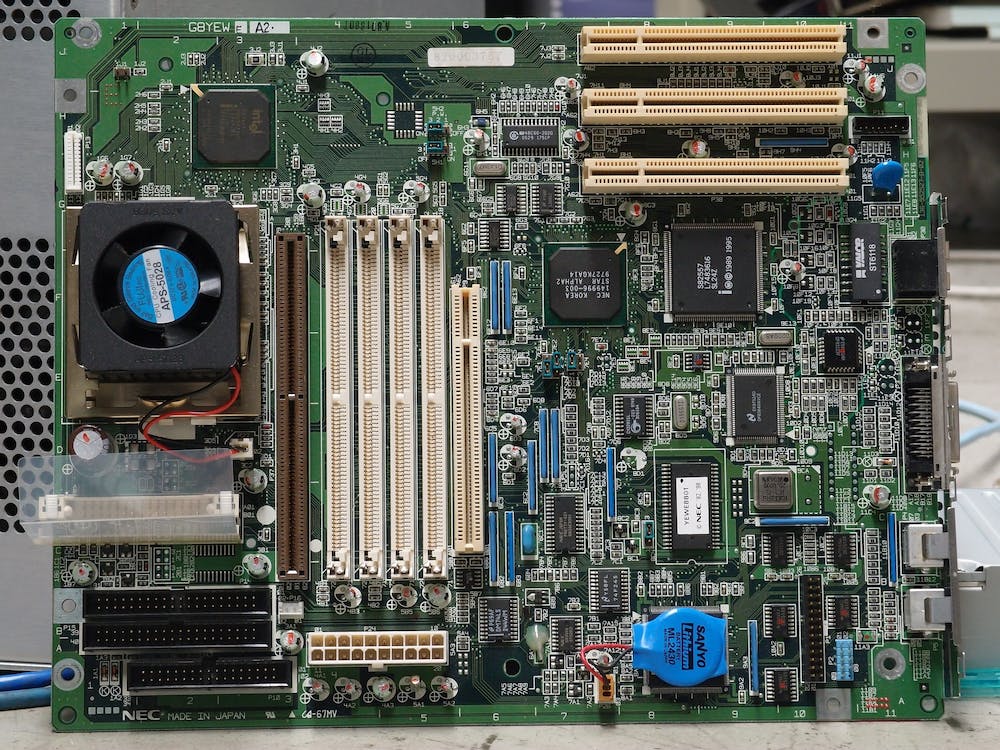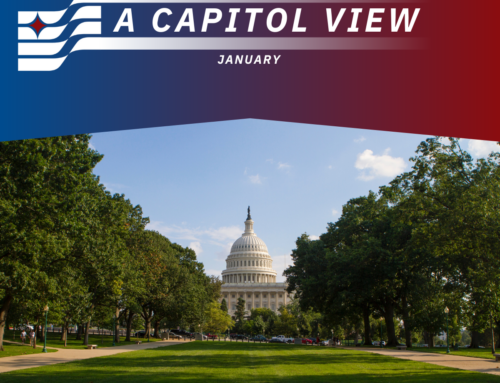What’s Going on in Congress? | Budget Deadline, NDAA, and 2022 Midterms Results
Budget Deadline Approaching
Congress set the Continuing Resolution they passed earlier in the year to expire on December 16. With just under three weeks until the expiration date, both chambers must resolve the differences between their bills and pass a conferenced version to avoid a government shutdown. Senior leadership from both chambers has suggested that they plan to pass the budget instead of a CR before the deadline.
NDAA Progression
The FY23 National Defense Authorization Act (NDAA), one of two annual must-pass defense bills, is tentatively scheduled for conference during the current congressional lame-duck session. Conference is when Congress resolves the differences between their two bills. Despite signaling from Minority Leader Rep. Kevin McCarthy (CA) to push back passage until January, House Armed Services Chair Rep. Adam Smith (WA) and Ranking Member Rep. Mike Rogers (AL) have both predicted that a final version of the bill will be ready for a vote during the first week of December.
With only a month remaining for a bicameral conference and vote, Majority Leader Sen. Chuck Schumer has stated that it’s unlikely his chamber will pass its own version of the annual defense policy bill, citing other legislative priorities for the lame duck session. This would be the second year in a row that this has occurred. House and Senate Armed Services Committee Leaders have been conducting informal negotiations with the goal of producing a bicameral bill by December 31.
2022 Midterms Results Mania
The dust has settled, and nearly every race of the 2022 midterms has been decided aside from the few that are too close to call and the impending runoff in Georgia. Even with the impending runoff, Democrats will retain their majority in the Senate as Sen-Elect John Fetterman (PA) is set to replace retiring GOP Sen. Pat Toomey (PA), while Sens. Cortez Masto (AZ) and Mark Kelly (AZ) were able to fend off GOP challengers in tight races.
Unlike in the Senate, Democrats lost their slim majority in the House to an even-slimmer GOP majority. One race has yet to be called in California, but the GOP is set to command 221 seats to the Democrats’ 213.
Key committees will see significant shake-ups as the balance of power shifts and new members fill in for a record number of retirees.
Congressional Budget Office Releases Analysis on Navy FY23 Shipbuilding Plan

In November, the Congressional Budget Office (CBO) released its analysis of the Navy’s FY23 Shipbuilding Plan. The CBO contested many of the cost estimates the Navy had released in their plan earlier this year, with many of their estimates being far lower than the CBO’s initial cost prediction. The analysis predicted that total annual shipbuilding costs will average about $30 billion to $33 billion (in 2022 dollars) over the next 30 years, which is 14 to 18 percent higher than what the Navy had estimated in April.
For the first time, instead of publishing a single plan for the shipbuilding goals and needs of the Navy, three alternatives were presented to outline the Navy’s potential decades into the future. The plans differ in the number of ships acquired and which types of vessels the resources would be focused on. All reflect the type of sea power the Navy believes will be needed in order to respond to future threats and the capabilities that will be needed in order to maintain US maritime dominance. However, one thing that each plan has in common is that all three alternatives would require the Navy’s total annual budget to grow above current levels.
Department of Energy Announces Recipients of Battery Recycling, Reuse Awards
 On November 16, 2022, the Biden-Harris administration announced the recipients of ten awards totaling $74 million of Infrastructure Investment & Jobs Act (IIJA) funding to advance technologies and processes for EV battery recycling and reuse. Awards ranged from four to ten million dollars. With l cost share, the 10 projects will invest a total of $126 million into the domestic battery supply chain. Selected projects fell into two areas of interest: Advanced Materials Separation, Scale-Up and Reintegration for Lithium-Ion Battery Recycling, and Second Use Scale-Up Demonstration Projects.
On November 16, 2022, the Biden-Harris administration announced the recipients of ten awards totaling $74 million of Infrastructure Investment & Jobs Act (IIJA) funding to advance technologies and processes for EV battery recycling and reuse. Awards ranged from four to ten million dollars. With l cost share, the 10 projects will invest a total of $126 million into the domestic battery supply chain. Selected projects fell into two areas of interest: Advanced Materials Separation, Scale-Up and Reintegration for Lithium-Ion Battery Recycling, and Second Use Scale-Up Demonstration Projects.
This historic announcement represents the first tranche of $200 million provided by the IIJA for battery recycling and second-life applications and builds upon the $2.8 billion provided to 21 projects last month for domestic battery processing and component manufacturing. IIJA investments into the domestic EV battery supply chain are also supplemented by Defense Production Act (DPA) Title III funding and the Inflation Reduction Act (IRA).
These ten funded projects will enable second-use scale-up demonstrations for the integration of end-of-life EV batteries into secondary applications. Increased activity in the recycling and reuse of batteries will work to reduce the rising demand for raw critical materials and improve the sustainability and security of the EV battery supply chain.
A list of selected awardees is available here. A list of project factsheets is available to view here.
Reflecting on the Department of Energy’s Battery Supply Chain Awards
 As mentioned in October’s issue of A Capitol View, the Department of Energy (DOE) announced the distribution of Infrastructure Investment & Jobs Act (IIJA) funding for projects that strengthen the domestic manufacturing and processing of batteries, with 5 of 21 awards secured by SMI’s energy practice. SMI’s Vice President Dr. Drew Ronneberg, a former DOE Vehicle Technologies Office lead, reflects on the release of these critical awards and discusses his outlook for the remaining $3 billion provided under the IIJA for these awards.
As mentioned in October’s issue of A Capitol View, the Department of Energy (DOE) announced the distribution of Infrastructure Investment & Jobs Act (IIJA) funding for projects that strengthen the domestic manufacturing and processing of batteries, with 5 of 21 awards secured by SMI’s energy practice. SMI’s Vice President Dr. Drew Ronneberg, a former DOE Vehicle Technologies Office lead, reflects on the release of these critical awards and discusses his outlook for the remaining $3 billion provided under the IIJA for these awards.
This first round of selected awards provided $2.8 billion in total to 21 projects. Were there specific technologies, readiness levels, or areas of interest that were prioritized in this first round?
The awardees emphasized upstream components of the Li-ion battery supply chain, including mineral processing, cathode materials, graphite anode materials, silicon anode materials, binders, electrolyte salts, and recycling technologies. There was a notable absence of cell and battery manufacturing awards because of the tax incentives that were passed as part of the Inflation Reduction Act (IRA).
How do you see the remaining $3.2 billion being distributed? Will there be new priorities in terms of technology focus areas, technology readiness levels, or geographic location?
DOE has not shared its thoughts on the remaining funding as yet. It seems likely they will “fill in the gaps” of technologies they did not fund, and we also think it will be important for DOE to incentivize domestic manufacturing facilities for next generation Lithium battery technologies like Li-S batteries, Lithium metal anodes, and solid-state electrolytes. The US needs to do this in order to leapfrog Chinese manufacturers and dominate the market for ultra-high energy density batteries that are not dependent on materials from foreign sources such as nickel and cobalt.
The Biden administration has put great emphasis on environmental justice and its Justice40 initiative in the implementation of energy infrastructure and research funding. Do you believe this was a major factor in the selection of award recipients and has this push changed how the Department of Energy will prioritize federally funded projects in the future?
It was important for applicants to show that they understood the needs of the disadvantaged communities (DACs) near the proposed facilities, that they have conducted outreach to these communities, and describe in detail the concrete steps they would take to address the Biden Administration’s Justice40 goals as part of their proposal’s Diversity, Equity, and Inclusion plan. It seems they allowed considerable leeway on specific plans, as long as the plans had firm commitments and goals. It was not advisable to just quote from the Company’s HR anti-discrimination policies and present vague plans to identify and meet with affected DACs.
What other lessons can be learned form this first round of selections?
It was important to have the technology proposed validated through thorough testing, to share those results in the proposal, and to provide strong letters of commitment from potential customers and suppliers. Demonstrating a good understanding of the market and financial modeling demonstrating profitability were also important factors in successful proposals.
How do you recommend interested companies and existing projects prepare for next round of solicitations?
If a company is proposing new technology, it is important to have its performance validated through thorough testing, preferably third-party testing that can be shared with DOE. It is also important to secure the strongest letters of commitment possible; it is recommended to start the commitment letter process early because these types of letters take a long time to get through company approval processes.
What are some FAQs you have received from parties interested in pursuing federally funded battery supply chain projects?
For the first solicitation, our clients’ questions focused on how to write a good DEI plan, how to develop a project budget, how to present their proposal in the most compelling manner, and how to demonstrate the national need to manufacture the battery material domestically. These will likely be the same issues that need to be addressed in the second solicitation. Other areas of interest included the value of increased cost-share contribution, strategic partners, project location, political support, and project size.





